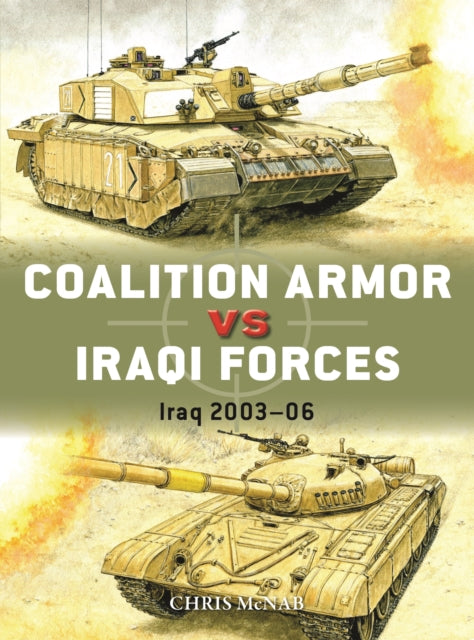Coalition Armor vs Iraqi Forces
Usually shipped within 24 hours
UK deliveries from £5.95
Delivery & Returns
Delivery & Returns
We use the Royal Mail, DHL Express or UPS for our customers. For UK addresses, deliveries under 10kg are a standard £4.95 via Royal Mail Tracked 48 Service. For orders over 10kg and overseas customers, postage is calculated for you at checkout once you have entered your postal address. This price, does not include any potential custom charges that may apply, depending on the product or destination, as every country has very different import duties / taxes. Online exclusive products (such as trainers) will be delivered to you directly from the printer, separate from other items in your order, but your postage fee covers ALL items in your order.
If you are unhappy with your purchase, please email shop@tankmuseum.org within fourteen (14) working days of receiving your goods, and return it to us at the address below, in its original condition, unopened (with any seals and shrink-wrap intact) and we will issue you a full refund or replace it. Goods must be returned at your own cost. If the item is faulty, you do not need to return it, we will send you a replacement free of charge.
Description
Description
By Chris Macnab
Paperback
An illustrated study of how coalition armour in Iraq in 2003 handled a unique multi-threat environment, from enemy armour to IEDs. On 20 March 2003, Coalition forces launched the invasion of Iraq on a massive scale. Their armoured fighting vehicles (AFVs) faced an uncertain level of resistance, and soon had to overcome a wide range of enemy threats.
These included tank vs tank clashes during the first days of the invasion (most famously at Basra and Mahmoudiyah), and subsequently the dangers posed by enemy rocket-propelled grenades, cannon fire, antitank guided missiles, and improvised explosive devices. This vital new study covers both the opening clashes between opposing AVFs and the tactics developed by Iraqi insurgents seeking to neutralize Coalition superiority. Featuring full colour photos, battle scenes, weaponry, and tactical illustrations, it draws upon first-hand accounts and official post-battle analyses to examine how Coalition forces responded to the change in the nature of the threats.
Among the topics addressed are the coordination between Coalition infantry and air power; how dealing with roadside bombs in Iraq resulted in changes to equipment, tactics, and force structure; and the lessons learned for future
![Coalition Armor vs Iraqi Forces Book [variant_option4]](http://tankmuseumshop.org/cdn/shop/files/9781472855749_2d2c5b22-5c40-4e94-8646-6ab95a5a802a.jpg?v=1748335459&width=1214)

![Coalition Armor vs Iraqi Forces Book [variant_option4]](http://tankmuseumshop.org/cdn/shop/files/9781472855749_2d2c5b22-5c40-4e94-8646-6ab95a5a802a.jpg?v=1748335459&width=88)
![Tank Museum Playing Cards Game [variant_option4]](http://tankmuseumshop.org/cdn/shop/files/ProductShoot_10_10_2025035.jpg?v=1760358498&width=176)
![Tank Museum Wrapping Paper - Two sheet pack Wrapping Paper [variant_option4]](http://tankmuseumshop.org/cdn/shop/products/Wrapp_Paper_All.jpg?v=1748337915&width=176)
![Coalition Armor vs Iraqi Forces Book [variant_option4]](http://tankmuseumshop.org/cdn/shop/files/9781472855749_2d2c5b22-5c40-4e94-8646-6ab95a5a802a.jpg?v=1748335459&width=640)



